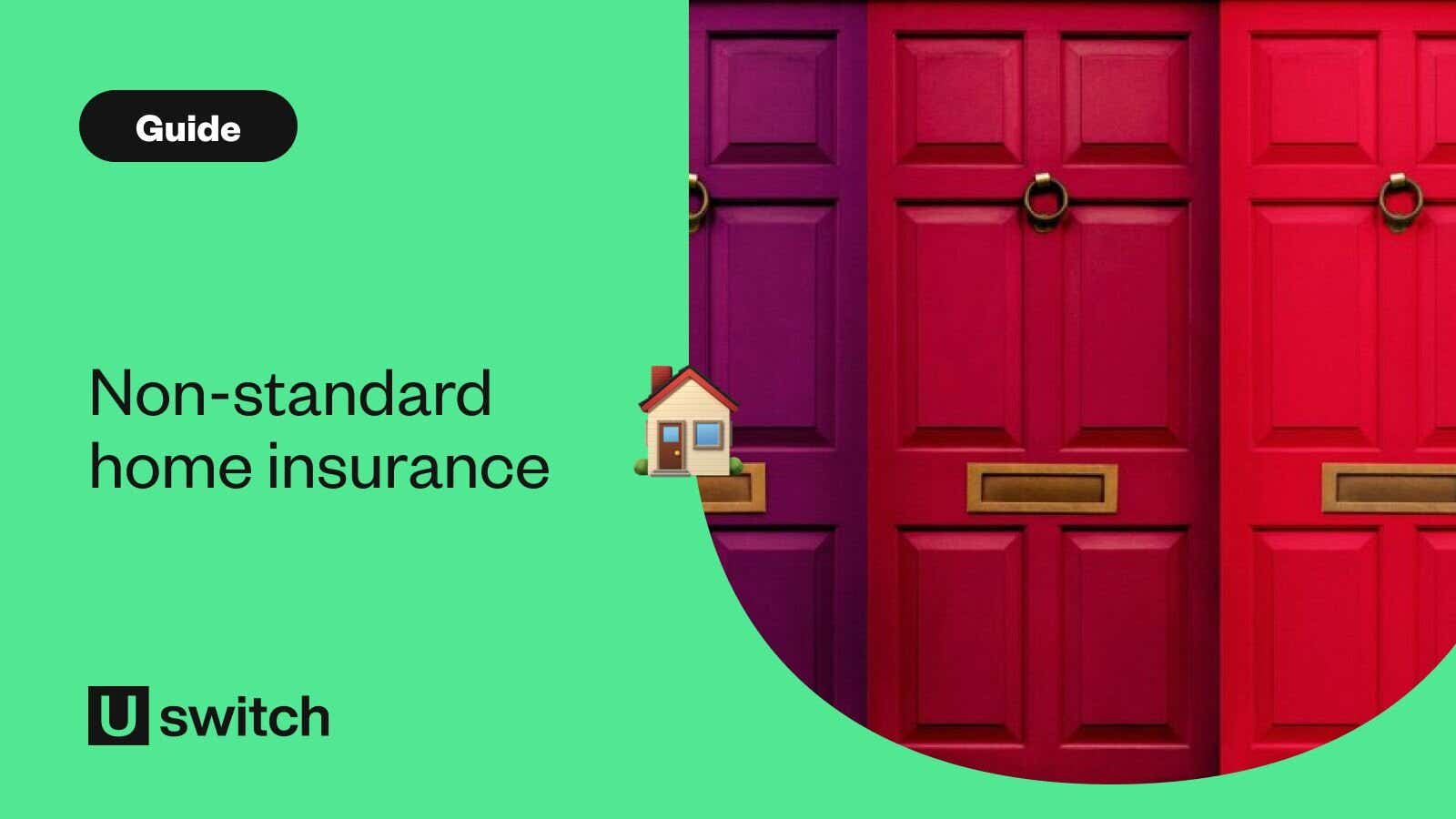Non-standard home insurance


What is non‑standard home insurance?
Non‑standard home insurance covers properties that don’t fit the typical insurer profile. That might be because of unusual construction materials, higher rebuild costs, special risks like subsidence or flooding, or if the home sits empty for long periods. Standard home insurers often avoid these because they’re harder or more expensive to insure.
This specialist cover plugs the gaps left by standard policies, so you get protection that fits your home’s quirks and risks.
What is considered a non‑standard home?
A home can fall into this category for a few different reasons. Here are the most common types:
Non‑standard construction materials
Homes built with materials outside the usual brick or block, such as timber‑framed, cob, steel frame, or even more unusual builds. These can mean higher repair costs or harder-to-find builders.
High-value homes
If your rebuild value is £1 million +, your insurer may see you as non‑standard. That doesn’t just reflect price, it often means more ornate finishes, unique features or heritage elements.
Listed buildings
If your home has historical or architectural protection, you’ll likely need listed‑building insurance. Repairs must meet legal requirements, so they’re more costly and need specialist help.
Subsidence
If your home has a history or high risk of subsidence (ground sinking), standard policies can exclude you. You’ll likely need tailored cover that understands soil types and includes specialist repair clauses.
Flood risk
Homes in flood-prone zones (like Flood Zone 2 or 3) can be refused by standard insurers or offered at high premiums with limited cover. Non‑standard insurers often price based on an actual flood‑resilience plan.
Average cost of home insurance for non-standard houses
Below is a rough guide to the average annual cost of non-standard home insurance. Your own quote may vary depending on your specific factors like location, rebuild value, and claims history.
| Type | Average annual cost of home insurance* |
|---|---|
| Subsidence | £621 |
| Grade 1 listed building | £648 |
| Timber frame buildings | £288 |
| Thatched-roof homes | £1,788 |
| Prefab houses | £271 |
*Based on Confused.com data, Q4 2024
How to get a non‑standard home insurance policy
1. Gather the right information
Insurers will ask for:
- A clear rebuild value estimate
- Property age and build type
- If it’s listed or historically significant
- Any history of subsidence or flood claims
- Your flood-risk level
- Details about occupancy (full-time, holiday home, empty periods)
2. Shop around specialist insurers
Not all providers cover non‑standard cases. Explore both well-known names and niche brokers.
3. Read policy details carefully
Watch out for restrictions on materials and repair methods, like requirements to use lime mortar on listed homes. Check your excess and confirm how they value your property.
4. Buy and review
Once you’re happy with premiums, add‑ons, and exclusions, take it. Keep your insurer updated if your circumstances change, you’ll need an updated policy to avoid invalidating it.
Policy add‑ons for non‑standard home insurance
You may want to consider these optional extras:
- Alternative accommodation cover - useful if repairs take longer due to listed status or specialist building requirements.
- Professional fees cover – usually covers architects, surveyors and permit costs.
- Increased rebuild cover – can protect against rising construction costs.
- Legal liability – can come in handy for listed or tenant‑occupied properties.
- Accidental damage – sensible for fragile materials or historic fixtures.
Frequently asked questions
Why is it important to declare that my home is non‑standard?
It’s important to declare your home is non‑standard because insurers under‑price or refuse policies that don’t match your home’s risks. Being upfront helps ensure your claim is valid when you need it.
Does non‑standard home insurance cover unoccupied properties?
It can, but only if you tell your insurer. Many non‑standard policies offer unoccupied‑home insurance, which standard policies often deny once your place is empty for more than 30 days.
Can personal circumstances impact home insurance?
Yes, your claims history, credit rating, or history of bankruptcy can affect both standard and non‑standard policies. Insurers assess risk both from your property and you.
What does non‑standard construction mean?
It refers to building materials or methods that aren’t brick or block, things like timber‑framed, cob, or steel‑frame. These often need specialist repairs and different risk assessments, so policies are tailored.
What are considered non‑standard risks to a property?
Common non‑standard risks include flood exposure, subsidence, listed‑building status, unusual build types or high rebuild costs. They each add complexity, so insurers treat them differently.
FAQs
Why is it important to declare that my home is non‑standard?
It’s important to declare your home is non‑standard because insurers under‑price or refuse policies that don’t match your home’s risks. Being upfront helps ensure your claim is valid when you need it.
Does non‑standard home insurance cover unoccupied properties?
It can, but only if you tell your insurer. Many non‑standard policies offer unoccupied‑home insurance, which standard policies often deny once your place is empty for more than 30 days.
Can personal circumstances impact home insurance?
Yes, your claims history, credit rating, or history of bankruptcy can affect both standard and non‑standard policies. Insurers assess risk both from your property and you.
What does non‑standard construction mean?
It refers to building materials or methods that aren’t brick or block, things like timber‑framed, cob, or steel‑frame. These often need specialist repairs and different risk assessments, so policies are tailored.
What are considered non‑standard risks to a property?
Common non‑standard risks include flood exposure, subsidence, listed‑building status, unusual build types or high rebuild costs. They each add complexity, so insurers treat them differently.